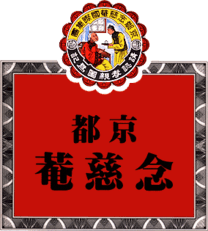Nin Jiom Pei Pa Koa


King-to Nin Jiom Pei Pa Koa (Chinese: 京都念慈菴川貝枇杷膏; pinyin: Jīngdū niàn cí ānchuān bèi pípá gāo), commonly known as Nin Jiom Pei Pa Koa or simply pei pa koa (Chinese: 枇杷膏; pinyin: pípágāo), is a traditional Chinese natural herbal remedy used for the relief of sore throat, coughs, hoarseness, and loss of voice. It is a throat demulcent and expectorant.
In the name of the company, king-to means "capital", referring to Peking, and nin jiom means "in memory of my mother";[1] hence, it stresses the important virtue of filial piety. Pei pa koa means "loquat syrup".
History
The formula for pei pa koa was originally created by Dr. Ip Tin-See, a physician in the Qing Dynasty.[2] Yang Jin, a county commander, asked Doctor Ip to treat his mother's persistent cough. They were so impressed that they created a factory to mass-produce it.[1] Later, the Yang family sold the business to Tse Sui-Bong, a medicine practitioner. Nin Jiom Medicine Manufacturing was incorporated in 1962 to expand the business.[3] Today, it is manufactured and sold by Nin Jiom Medicine Manufactory Limited, a Hong Kong corporation. It is available worldwide.
Pei pa koa has annual sales of 45 million USD.[2] The product is marketed under the brand name "Cap Ibu dan Anak" in Malaysia.[4]
Effectiveness
A study at the China Academy of Traditional Chinese Medicine published in a 1994 article, "Pharmacological studies of nin jion pei pa koa", states that Nin Jiom Pei Pa Kao "had significant cough relieving and sputum removing effects. It also had an evident effect on relieving asthma in vivo and in vitro. In four acute or sub-acute inflammatory models, the anti-inflammatory effect was marked.." [5]
Composition
Pei pa koa is made up of a blend of herbal ingredients[6] including the fritillary bulb (Bulbus fritillariae cirrhosae, 川貝母), loquat leaf (Eriobotrya japonica, 枇鈀葉), ladybell root (Adenophora stricta, 南沙參), Indian bread (Wolfiporia extensa, 茯苓), pomelo peel (Citrus maxima, 化橘紅), chinese bellflower root (Platycodon grandiflorum, 桔梗), pinellia rhizome (Pinellia ternata, 半夏), Schisandra seed (Schisandra chinensis, 五味子), Trichosanthes seed (Trichosanthes cucumerina, 瓜蔞子), coltsfoot flower (Tussilago farfara, 款冬花), thinleaf milkwort root (Polygala tenuifolia, 遠志), bitter apricot kernel (Prunus armeniaca, 苦杏仁), fresh ginger (Zingiber officinale, 生薑), licorice root (Glycyrrhiza uralensis, 甘草),[7] and menthol in a syrup and honey base.
Delivery
It is common to take the preparation right from the bottle served in a tablespoon. It can also be prepared as a drink, by dissolving a tablespoon full in hot water.
See also
References
- 1 2 Shea Driscoll (October 9, 2014). "5 things about Chinese herbal syrup Nin Jiom Pei Pa Koa". The Straits Times. Retrieved November 14, 2014.
- 1 2 The Chamber Business Website - Member Profile
- ↑ Ali F. Farhoomand, (2005). Small Business Management and Entrepreneurship in Hong Kong: A Casebook. Hong Kong University Press. ISBN 9789622097582. p.48
- ↑ Malaysian Business, Issues 1-6. New Straits Times Press (Malaysia), 1997. p.32
- ↑ Li, Z. L., Dai, B. Q., Liang, A. H., Li, G. Q., Yang, Q., & Xue, B. Y. (1994). Pharmacological studies of nin jion pei pa koa. China journal of Chinese materia medica (Zhongguo Zhong yao za zhi), 19(6), 362-5.
- ↑ http://www.ninjiom.com/hongkong/index.php?option=com_content&view=article&id=48&Itemid=85&lang=en Nin Jiom
- ↑ http://alternativehealing.org/chinese_herbs_dictionary.htm Chinese Herb Dictionary
External links
- Official company site
- Nin Jiom Pei Pa Koa (Institute for Traditional Medicine article)
- King-to Nin Jiom Pei Pa Koa